Musings From The Couch
Author: utbt26 Apr 2010
The intermittent rains means only one thing in our household and that is Mieja falling sick. Usually the duration in which she is sick is timed between a Friday afternoon to Sunday afternoon. The whole weekend I would carry her around like a joey and by Monday she would return to school healthy and me exhausted. This time she fell sick on a Monday afternoon. So I was happy for the small blessing.
Overall it was a pretty smooth sickness, we wrapped it off in two days with just one throw up and we vegetated on the couch and read plenty of books. When her temperature spiked she would have her medicine and pass off and I would catch up on my homework and reading work.
Beginning of every semester is time of glee for me. I thoroughly enjoy the process of signing up for the classes I need to do, bidding for used text books on Ebay and such. There is such a kick in getting a three digit dollar price text book for one sixth the price! Now that I am done with all my advanced level courses, I have a few general education courses that need to be done. I was said that I have to have at least one unit in PE(Physical Education). I tried my best to get PE waived in lieu of my stint as a yoga teacher. I am certified and I taught yoga for a good one year. But it did not fly. So I signed up for a Stretch and Flex televised course. Yep, ‘technology has improved sooo much-a?!’ that now I can do a PE course without being on campus. BTW, from my view from the couch, they can stretch a little bit more and flex a bit more 🙂
Some of the books that earned Mieja’s approval(A.K.A read a 100 million times) are below.
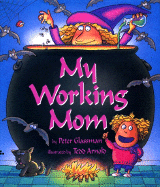 |
My Working Mom by Peter Glassman, illustrated by Tedd Arnold. Now, this book, me likey mucho and I think it deserves a spot on Saffron Tree. So hop over to ST to read the full review. |
Observations of a Five-Year-Old
Author: utbt22 Apr 2010
Chula is now in to reading. If she sees print, she HAS to read it. It has become a basic need for her. So I leave the child to dress herself for school or bed, what does she do? She is sitting there and reading labels on her clothes. This led to her observation, “Made in China??!!! Hmmm…. It looks like the whole world is made in China.”
What Does One Learn From A Book?
Author: utbt20 Apr 2010
I mean any book.
Subject matter.
If so, why is it suggested that parents read to infants? Do infants really ‘get’ the subject matter? Definitely not in the adult sense.
Knowledge.
Hmm…. Kind of yes. But again not in the adult sense.
From a book, over many many reading sessions, a child slowly realizes
-Print symbolizes language.
-Words symbolize objects and/or actions.
-Letters symbolize sounds.
-Thought process can be communicated either verbally or through print.
-Print holds knowledge.
-Print follows a certain pattern, some ground rules. For example, in many languages books are read from front to back, top to bottom, from left to right.
-It prepares them for an adult life where print is used to acquire/disseminate knowledge and to communicate ideas.
-Reading loudly to a child creates phonemic awareness and phonic awareness. This later leads to reading and writing development.
If a child can learn so much from a book created by another person, what can she learn from a book that she creates? Is it possible for a child who cannot read to make books?
In Montessori they have a wonderful work material called definition books. These books are approximately 3inch X 3inch, spiral bound, with about 5-8 pages, on subjects such as mammals, parts of the root, parts of the leaf etc, with simple illustrations on one side and a 2-3-sentence explanation on the other side. It is perfect for a young child to hold and use. A Montessori teacher uses these books in her classroom in various ways depending on the stage the child represents.
I am not going in to the philosophy and the exact use of these books in a Montessori classroom, but FYI, the progression roughly follows: reading the book to the child -> asking the child if she wants to make a book -> taking the child to challenging stages depending on the child’s fine motor control+ability to focus+ periods of concentration+child’s ability to come back to the same work and continue from where she left off -> finally helping the child to assemble her hard work in to a book that is a replica of the definition book on the work shelf.
Sometimes children do one book or at times half a book and move on. Some children do a few books till they get the fundamentals mastered. Chula being a specialist, has made all the definition books that are present in her classroom. After she did the first few books she declared that her goal is to create a library with her books that contain her own illustrations and handwriting. So we have about 21 of the books she made. The first book dates to the beginning of 2009 and the most recent book shows the date Feb 2010. As a result of these wonderful books, I now have the opportunity to look at her progress in writing.
The first book is devoid of any letters, she had just traced the pictures. The next stage, she had traced the definitions and I can see plainly that the she had done the tracing blindly driven by the challenge of following the cursive in the definition books. In the stage that followed she was able to read what she was writing and she shows control over the script. A recent time stamped book from this collection is a poem book. The title of the book is Caterpillar by Christina Rossetti. She has done a front cover, back cover, no tracing, but she has copied the poem and I was said (by her) that she has been working with her teachers on ‘POEMS’ and she made this book. The most recent book is a book on ‘FROOTS AND VECHTUBLS’. She said that she made observational drawings of the life sized fruits and vegetable models they have in their classroom and captioned it without any help. In this book the author and illustrator has presented to us belle peper, aplle, lemin, oringe, graip, sraberee 🙂
I am very much enjoying her progression from just doing the work given to the stage where she takes ownership of her work and creates. And to add to this Mieja has started to bring her books home. The first book on Animals of Antarctica was proudly presented on Feb4, 2010. She had traced a few Antarctic animals and her teacher captioned the animals for her. The third and the most recent book is a complete definition book on the ‘Parts of the leaf’, pictures, front and back cover and tracing of definition included. I can’t wait to see what this one has in store for us 🙂
Potty Humor
Author: utbt23 Mar 2010
Am I done with the language development series? Honest answer, I don’t know if I will be done with any of the series posts I do. As the children grow, I find something interesting to add. But this post has been in my mind for a long time now and potty humor is one of the important stages of language development and humor development in children, so I have to record it.
Some time around two, children realize that words are not just sounds that come out of us, but they are powerful tools. They realize that what they say, and at times what they don’t say, can affect the environment around them. You hear your child using the word NO a gazillion times? That is the indicator that the child has made this connection in her brain.
Some time around four, at least that is what some books say, but I started noticing this phenomenon in our household when Chula was 3 years, may be because of the mixed age school setting….where was I? Yes, some time around four, children notice that some words cause unusual behavior in others. These are called impact words. A child says these words and the environment does not respond, but it reacts. The young child senses the unrest and unease these words cause. Even if she gets the literal meaning, she has no clue why in the world the adults are making such a big deal of fuss about it. Some example of impact words are poo-poo, pee-pee, other potty related words, words that signify private body parts, words related to death and violence etc.
3 year old Chula used to say poo-poo or pee-pee and she would burst in a fit of giggles. This was the girl who still couldn’t differentiate between a good smell and a disgusting smell. So she must be clearly copying the older kids at school. By four years and a few months, she totally got the concept of disgusting/offensive/unpleasant, so I was hoping that she would outgrow this phase by 4.5 years or so.
But I did not take in to account Mieja, who is 18 months younger to Chula. When Chula entered this phase, Mieja was 1.5. She echoed her sister and giggled. She being the clown that she is purposefully repeated potty words to get her older sister to giggle. Now Chula who is supposed to have outgrown this phase, is still locked down to this phase because Mieja is smack in the middle of that phase. The girls feed off of each other and there is perpetual giggling going on.
I did what is sensible. I was mildly amused at first and ignored it later. I do not want to sound like a fuddy-duddy, but if your children sat in a restaurant and sang a top pitch chorus, to the tune of Old McDonald had a farm
“Maran thatha poo-poo paar,
pee-pee, poo-poo-pee.
Avar pannayil yirukkum pasuvinai paar
pee-pee, poo-poo-pee.
Ange poo-poo, yinge pee-pee…”
Won’t you be embarrassed? We are talking about the Saravana Bhanvan in the Bay Area and almost every one knows Tamil.
(The poem roughly translates to, “Look at Maran grandpa’s poo-poo, look at the cow in his farm, look at the poo-poo, there is poop there and pee here….” Now, I would like to say that we do not know or have a Maran grandpa. He is a fictitious character and any resemblance to real persons, living or dead, is purely coincidental. In their Tamil school, to inspire the children they have a set of Tamil rhymes to the tune of catchy English rhymes. And yes the rhyme has affected them deeply.)
So ground rule#1 was quickly concocted by the parents and was thrown out, ‘No potty talk at the dining table’, which was closely followed by rule#2 ‘No potty talk in front of company’. Now, as a parent, it is a tough job to set limits and ground rules. Because one must not over react and make a rule of everything, then your child will not follow any rule. Or if you try ignoring everything, then once again you will be faced with the scenario of your child not following any rule. So one has to make rules only when you know that the rule will fly and you will never know if a rule will fly unless you make a rule of it. Complicated stuff, I say! Potty talk = offensive talk = socially unacceptable being purely an adult concept, is not very successful at home, I have to admit. So currently, the adults are the only ones who follow it at home.
One bright sunny day, Chula very properly told me, ‘Amma, I understand that poo-poo and pee-pee talk upsets you. So Mieja and me will not do that any more.’ I was in seventh heaven, naturally, not because potty talk was abandoned, but because of the sincerity with which she approached me and the maturity she portrayed, but I was duly grounded when she finished her statement with, “We have a new word. FART.” And ran off singing, ‘FART, FART, FART, FART, FART, F, F….’ of course to the tune of A,B,C,D,E,F,G….
Mieja: Amma, AG says they call it gusu in their house.
{Yes, there is a whole army of tomorrow’s good citizens out there discussing such important stuff.}
Chula: R says gas. Gas is a English word Mieja. What language is gusu?
Mieja: Well, AG speaks Tamil. So gusu must be Tamil.
Chula: Really amma? {She stops mid sentence, because she instantly recognizes the look on my face. So turns and whispers to her sister}, We will ask our Tamil teachers in Tamil school.
Mieja: Yes, teachers know everything. We can ask M what it is in Spanish and J what it is in Chinese.
Mieja even made observations like, ‘When children make gas we make a sound ‘pa-da-pa-da’ and we all laugh. Then we say ‘excuse me’. When adults do it, we can’t hear it, but we can smell it. They do not say excuse me.’
So unless you are prepared to face the question,‘So….. how do you say fart in your language?’ avoid our house for the next few years.
Language Development IV
Author: utbt18 Mar 2010
Part I here.
Part II here.
Part III here.
Part IV here.
Considering how I acquired language and how I grew up, my brain is very bilingual and it adapts to the environment I am in. While in India, I found myself reading more Tamil, speaking more Tamil, hearing different dialects of Tamil and thinking more in Tamil. I remember hitting road blocks while trying to do creative writing in English. My vocabulary tank hit empty often and I confuse tenses. Presently the case is reversed. In my case, I feel my Tamil is just dormant and will come back with immersion.
My parents are with me right now, which makes me focus on something interesting. My dad was educated in Tamil medium till he completed high school. English was just one of the subjects. But he studied his history, geography, math, science, for that matter even English, through Tamil. He started formal English medium in his undergrad. He later acquired three masters degrees and a PhD in organic chemistry. He says that he struggled quite a bit for the first couple of months in undergrad, but it was smooth sailing after that. I find that his English is REALLY good. Much better than mine! We are talking about the person, who represented Annamalai University in the National Level and received prizes from Jawaharlal Nehru and Dr.Radhakrishnan for his creative writing in English and his mono act as Shylock. This is not totally out of context, because this article triggered my train of thought.
Now to the challenges I face as an immigrant parent. Both my children started as very fluent in Tamil. When they started preschool, they could follow simple one sentence directions in English, but couldn’t talk other than yes or no. It was a silent language receiving period for them for the first two months of preschool. After that they started code switching. Now it is English all the time. Initially I thought that the fascination of the newly acquired language is making them talk in English all the time and that they will change. After two years, I feel that they have successfully converted me!
Most of the bilingual studies in the United States, I feel, cannot be applied to the unique case of the Indian immigrant. In the States, the focus is more on ‘ENGLISH AS A SECOND LANGUAGE(ESL)’ learner. An ESL learner, is very fluent in his/her mother tongue, is introduced to English after the home language is mastered and continues to get her home language immersion at home, from relatives, peers from the same cultural background, entertainment media and books. Where as the development of home language in children of Indian immigrants is precarious. The children switch to English after they enter school and their level of home language immersion is not that great, owing to a great deficit in the dosage of home language they receive.
As a resident of the state of California, I am in a better shape when compared with my peers living in some remote city in the States. Here we have The California Tamil Academy, a Tamil school that we can send our children to. Not that an one hour a week, Tamil school is a cure all wonder, but in the worst case, one can at least hope that the children pick up some basic Tamil for survival. I volunteer to teach Tamil for a small group of ten year old children. I have to say that these children are pretty good. They can read, write and understand Tamil. They can talk, but are extremely self-conscious.
As a teacher how do I bridge the gap between spoken and written Tamil in my classroom? CTA follows the text books from Tamil Nadu text book society. Also the Tamil classes through CTA can count as foreign language credits in certain school districts in the Bay Area. So the text books have to be of a certain format and the syllabus has to meet certain standards. So the Tamil in the text book is appropriately formal for that level. From my observation of the children in my classroom, they do not think that that Tamil in text books are formal or different. They do not recognize the gap, because most of them converse mostly in English. Their dose of spoken Tamil at home is limited. Even if their parents talk in Tamil, an average ten year old gets a total 30 minute talk time with their parents after school-homework-homework related talk-play-extra curricular activities.
This is different from an average child growing up in India, where the child gets quite a bit of regional language from the environment and this language is different from what they read in books.
My aim as a Tamil teacher is to make the children feel comfortable talking in Tamil while helping them to read and write. Some how make them connect Tamil language and Tamil literacy. If at the end of a year, these children can recognize that there is a gap between spoken and written Tamil, I will be happy. Major portion of my 60 minute class is devoted to conversation. Most of the time, we talk about something that they can relate to. So I pick the young adult fiction to talk to them. (May the husband note that I am merely doing classroom research and Y.A Fiction is not to satisfy the child in me that refuses to grow up.) Books like this and this gets the conversation flowing effortlessly for a good 30 minutes. Every one has two cents to add and we help each other when we get struck forming a sentence in Tamil. The wimpy kid even branched off in to areas like right and wrong, about how bullying affects them etc.
This concludes part IV.
Language Development III: For Tulika Book Publishers
Author: utbt15 Mar 2010
Part I here.
Part II here.
Part III here.
What started as a comment reply on Tulika’s blog, discussions on Saffron Tree’s yahoo group and my personal blog, grew and decided to become a blog post. It also ties in with the Language development series I am doing, so here goes it….
There are two components to every language – Language part and the Literacy part.
Language is to talk and understand(when spoken to) a language. Literacy is print awareness in that language – to read and to write.
Typically children are experts in the language part by the time they are three, how is a mystery even to experts, but we are not going to go in to theories now. Then they slowly get the literacy part at around 5-6 years. That is what is developmentally appropriate.
I speak Tamil…or rather used to speak Tamil. In Tamil there is a gap between language and literacy and the gap is widening as we speak. If I think abt it, the gap still existed when I learnt Tamil as a second language. But I was immersed in both spoken Tamil and literate Tamil all the time. One of my early memories – writing my 4th std half yearly exams and delibrately spelling out, ‘nadandhu sendrar'(means ‘he walked’) and wondering we would say ‘nadandhu ponaru’ (also means ‘he walked’, but in spoken form), but while writing this is what we do. So it took me 9 years of my life to figure out that there is a bridge between Tamil language and Tamil literacy. But that was it, I never focused on that difference. After coming to the US, Tamil still persevered, through movies, music and books. Suddenly I look back and find that there are huge gaps.
In the past five years, mainly due to the kids, my external sources of Tamil language and literacy dried out. I haven’t laid my hands on any Tamil magazines/books in the past four years. Watching movies has become such a chore that I have to drink tea to make sure that I don’t doze off and the caffeine has been successful only for the first thirty or so minutes, after that Nithra Devi takes over. Tamil music, though mostly written in English, every couple of years YaadaYaada downloads some Tamil songs in to my laptop that goes in to iTunes and I listen to it in the car during my six minute drive to and from work.
So what about the internal sources? After all I did grow up in Singara Chennai and lived there for the first 22 years of my life! All I can say is, it is tough to keep up if one is not immersed. Plus it is so easy to parent in English. I can say to a child who is trying to claw or hit her sibling, “Well, the way I see it, you have two choices. You can use your hands gently and stay with us and have fun or I am taking you to the bed to clam down”. In English, it just flows, I don’t even have to think and construct the sentence. I dare not attempt it in Tamil.
Now language is something that is very fluid. It changes, grows, evolves, assimilates, gets diluted, adapts and waits for no one to catch up. Tamil language is even more fluid than Tamil literacy. I find that there is a gap not only between my own Tamil language and my own Tamil literacy, but also considering that my Tamil was locked in 1999 and became stagnant, I find gaps between my spoken Tamil and Tamil currently spoken Tamil Nadu.
If I paint the picture of a immigrant who has forgotten her roots, pardon me, I have to point out that I am not alone. One look at the survey results, tells me that even people living in India are in the same boat as me. Over multiple generations, this is the trend I see – my grandparents’ generation with about 20% gap between their spoken and written Tamil, my parents’ generation with about 50% gap spoken and written Tamil, gen-YNOT college kids with 60% difference between spoken and written Tamil and the young school going ones with 75% difference between spoken and written Tamil.
Okay there is a gap. How do we deal with it? What are the challenges I face as a parent? What are the challenges I face as an immigrant parent? What do I do in my classroom as a Tamil teacher? Part IV people.
Language Development – II
Author: utbt8 Mar 2010
A very old post I wrote on Language Development here.
Now, the poll results.
Number of people participated – 141 (People living in India = 43.9% + People living outside India = 56.02%)
99.29% know at least one Indian language. 30.49% know at least two Indian languages. 24.11% know at least three Indian languages.
89.36% have at least one language common with their spouse. Only 4.96% do not have a common Indian language with their spouse. Some people did not explicitly specify the languages the spouse knows and there were some unmarried people. That comes to roughly 5.6%
92.19% of us feel strongly(7 or higher on a scale of 1 – 10, one being the lowest and 10 being the highest) that our children must know at least one Indian language. 3.5% rated it at 5 and 0.7% rated it at 1.
In spite of 89.36% of us having at least one common language with our spouse, and 92.19% feeling strongly about their child speaking an Indian language, only 29.07% of us speak to our children in an Indian language.
I am not specifying the % of children who can talk and understand and Indian language because some were very young children and the number would not be a true representation.
Couple of personal revelations:
After this poll, I have a new gained respect to the standardized polls with restrictive choices. I always thought the generic polls are too foo-foo, but hey one learns something new every day-huh?!
Also I underestimated the power of the blogging mommy network, I did not expect such good turn out. I spent a great deal of time parsing and organizing the data.
I would like to thank you all for your time and your valuable inputs.
Keep tuned for more on Language Development in young children.
Time For The Next Poll
Author: utbt23 Feb 2010
This survey is closed. I will sort through the answers and will get back to you all with the results. Once again thanks for making the time to do this. (updated Feb28th, Sunday)
This is sparked by the home language discussion and second language learning that is currently buzzing around the blog-o-sphere.
*There are 9 questions.
* If you have any additional information that you would like to share, please use the comments section or send me an email at utbtkids@gmail.com
* You can choose to be anonymous while participating in the poll.
* Poll will be open till Feb 28th, Sunday, 9.00PM.
Poll results here.
Beasts Of India
Author: utbt17 Feb 2010
Edited to add: Submitted post for Shruti’s Artsy-Craftsy June 2001 Folk art challenge.
To play Feb’s “Guess the book” see the side bar.
FOLK ART.
The very first time I heard this term was in 2003. I was experimenting with various mediums. I took my Tanjore painting of Krishna and Balram to my oil painting class, people were impressed by the richness and details. That’s when some one popped the question, “Is this folk art? Some thing typical of India?”. Though I had no clue about the exact definition of folk art, some thing prevented me from saying yes. I thought hard and answered, “Well, it is more like traditional art, practiced in the southern part India.” Though I had answered the question, I had no idea about the difference between folk art and traditional art and why I chose the later term to describe my painting. But something was planted in my mind regarding the different art forms of Indian art. Ever since, people who have know me would have heard me say, “I am looking for books on Indian art that are intrinsically India.”
For the past couple of months I have been looking at Tara’s website, which by the way is my new pass time, and I must say that I am mesmerized. All their books have a unique theme and the vibrant book covers tempted me to hit the ‘Add To Cart’ button. It was at this point I happened to clean one of book storage bins and I almost squealed in delight. There, it was lying at the bottom of the bin was Tara’s BEASTS OF INDIA! I must have bought it in my recent India trip and must have completely forgotten about it or the book fairy must have paid me a visit. (In case if it is the book fairy, I don’t mean to sound ungrateful, thanks for this book and all that, but you really must look at the complete list. I so want to own DO! Also by Tara.)
The book has been reviewed for Saffron Tree. Find the review here.
How can we let this inspiration pass. So we combined it with the festive atmosphere of the Lunar New Year and Satish’s review of Everyone Knows What A Dragon Looks Like and we made our own paper dragons.
First what we talked about how every one imagined their dragons. Prominent features like big eyes, horns, bushy eye brows, sharp teeth, fire were thrown out. We all unanimously agreed that the dragon is scary and the color red must feature in the dragon.
We picked one style that inspired us to create our dragon. Chula wanted to combine Patachitra and Gond. The little one started with Madhubani and soon changed her mind. I was deeply attracted to Gond the minute I set my eyes on one. So I stayed with Gond till the end.
The hand with its fingers spread out can be a starter for many art forms. For the most part it eliminates the, “I can’t do it like you amma, can you do it for me?”. We traced our hands, leaving out the the thumb. We converted the index finger and the pinkie in to ears. The other two fingers became the horns.
It took me a good two hours to finish my dragon and I must say that it was deeply therapeutic. The little ones lost interest after the first fifteen minutes and they moved away. But they saw how much I was enjoying myself and came back to ‘help’. For the last 45 minutes they sat next to me, one holding the pens and one making sure that I did not miss the pattern. The critique from the little ones, “Well, he kind of looks friendly amma. Not scary at all. May be he is a she.” I did start out with the mental picture of the Yali, but the end result was very different.
I know that the books touched the girls because when I stepped out I saw that they had created out of side walk chalk a Warli inspired cow 🙂
With that I leave you with some pictures.
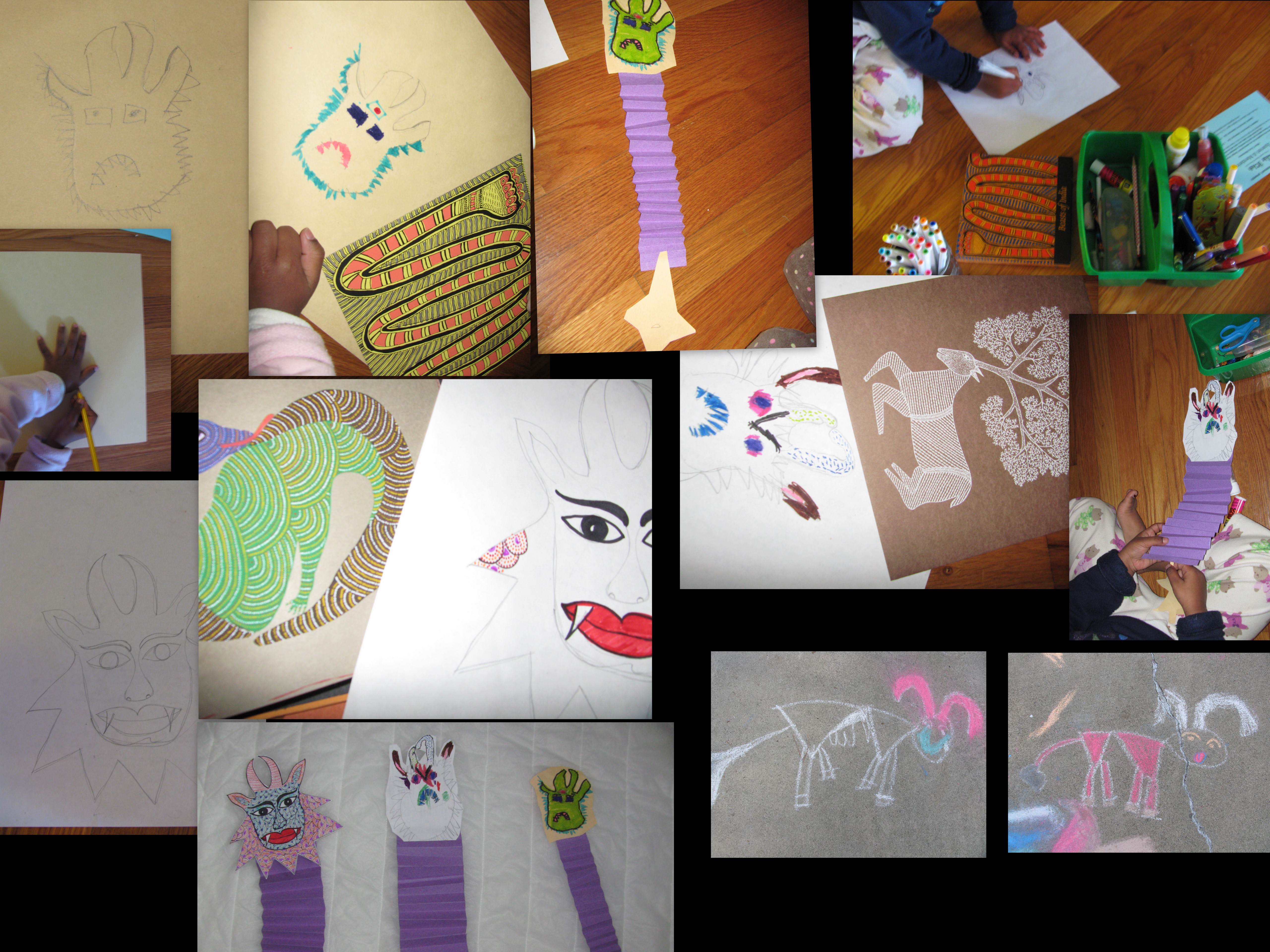
Dragon inspired by Beasts of India
Guess The Book
Author: utbt16 Feb 2010
See I simply cannot resist 🙂
Email, comment by Friday, 4.00AM PST.
And the clue is……
Updated to add:
The answer is: THE GREAT INDIAN NOVEL by SHASHI THAROOR
The Print Lover nailed it. She says “Vyasa + Pillaiyar = Mahabaratha Twitter bird -> Shashi Tharoor?” And exactimo!
I have read Mahabaratha by many different authors and that was instrumental in me picking up this book. It took me a few pages to understand the allegory, but I was proud and pleased as plum that I did it all by myself without running to Wikipedia. Though I had to take a break from it I found it compelling enough to return to it. So far a good read.

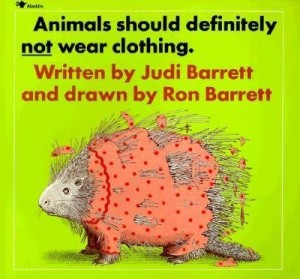
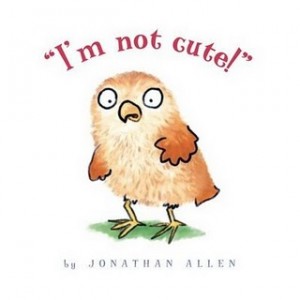
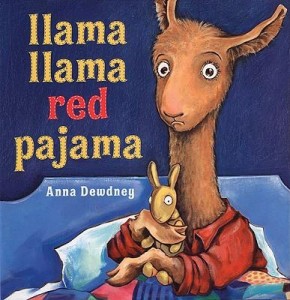
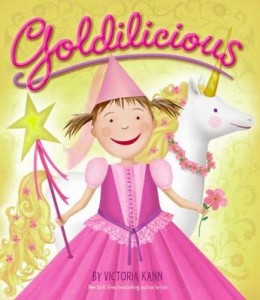




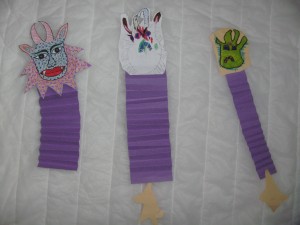
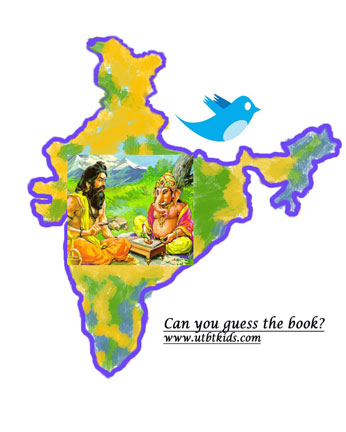
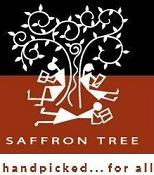
Recent Comments